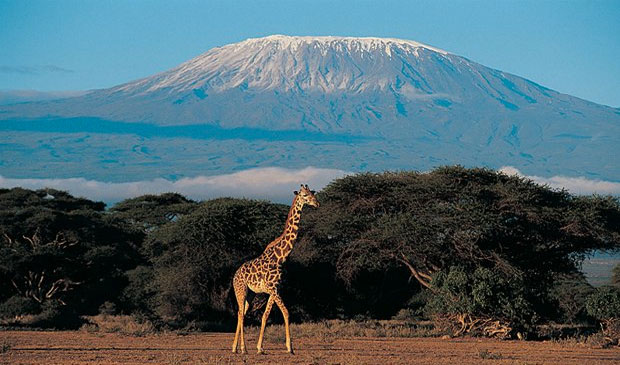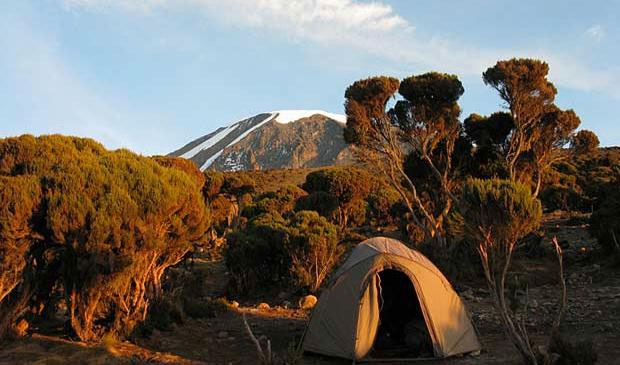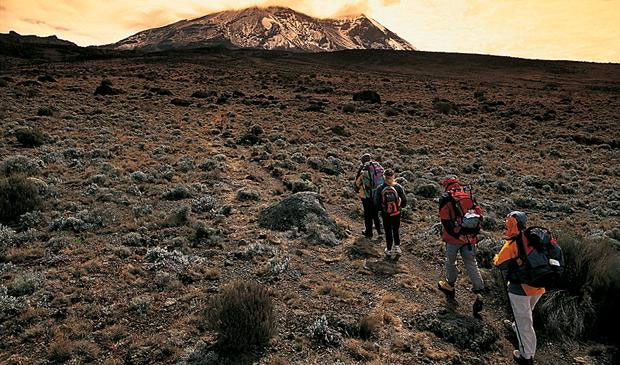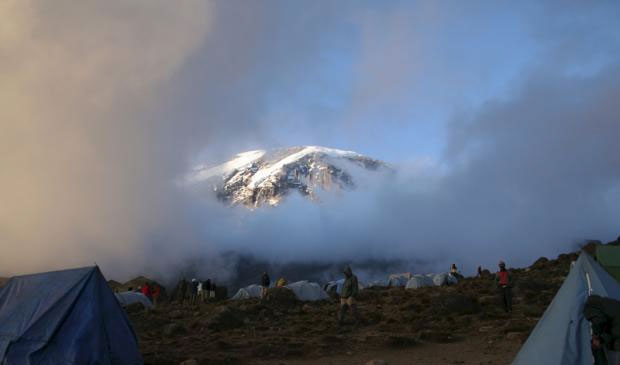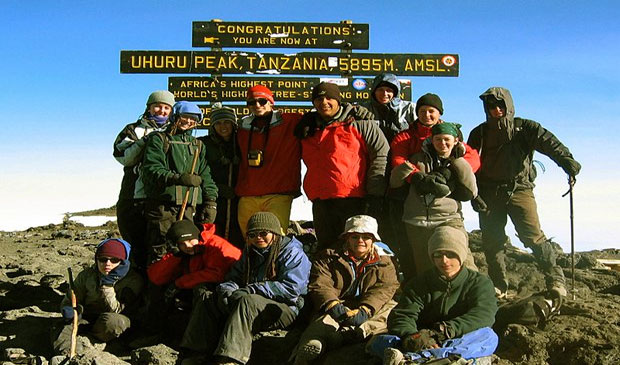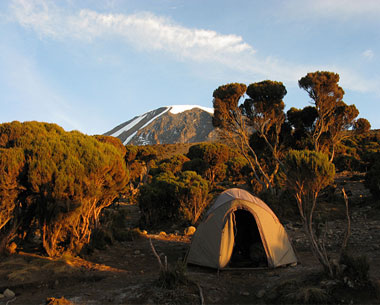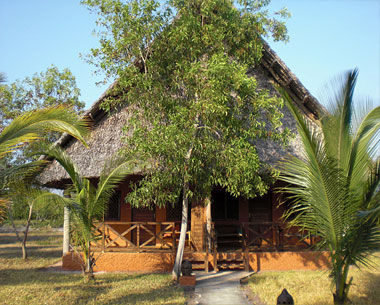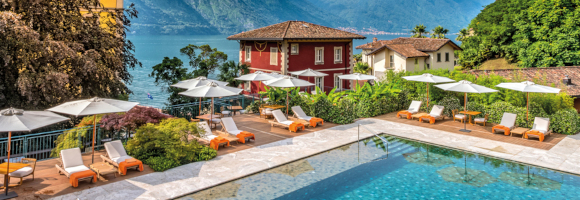At A Glance
- Climb the less trekked and scenic route
- 7 nights full service camping in three-man tents, private toilet tents provided, 2 nights comfortable en-suite hotels
- 8 days point to point walking
- Altitude maximum 5,895m, average 4,000m
- Full porterage throughout
From £2,599
12 days incl. flights
[/jbox] [/jcolumns]Climb Kilimanjaro on the much less-trekked Lemosho route
We will take you along the western approach and cross the caldera of Shira Volcano, passing underneath the southern icefields of Kibo, Kilimanjaro’s supreme volcano. Spend eight days on Africa’s tallest mountain, which allows ample time for acclimatisation and soaking up the ever changing scenery. This is one of the least trekked routes allowing you to enjoy the vast and wild Shira Plateau. This itinerary gives you a tremendous opportunity of climbing to the summit and standing on the roof of Africa. [jcolumns model=”3,4,4,”]Itinerary
[jaccordion size=”small”] Day 1 ::Depart London
[jacc/] Day 2 ::Arrive Arusha.
Arrive Kilimanjaro; transfer to Arusha. [jacc/] Day 3 ::To Londorossi; begin ascent to Lemosho Forest (2,650m)..
In the morning we transfer to Londorossi (2,250 m), passing between the slopes of Kilimanjaro and the horseshoe-shaped volcanic crater of Mt. Meru (a distance of about 120 km). After completing the necessary registration formalities, we drive on for a short distance through farmland and plantations to reach the Lemosho roadhead. The last 5 km of the road to the park gate is of poor quality, particularly after rain, and the drive there should be considered part of the adventure. We often have our lunch in the glades before starting to walk. It is an easy day of walking up a small path through beautiful and lush forest, this area has a variety of game including buffalo. We camp at Lemosho Forest camp (2,650 m). Approx 3-4 hours walking. [jacc/] Day 4 ::Explore Shira Plateau; camp at Shira One (3,550m).
The trail starts out in the lush rich montane forest before ascending into the moorland zone of giant heather. The trail climbs steadily with views across the plains opening out as we reach the rim of the Shira Plateau. There is a tangible sense of wilderness especially if the afternoon mists come in. We camp in the centre of the plateau at Shira One (3,550 m). Approx 6-7 hours walking. [jacc/] Day 5 ::Walk to the summit of Shira Cathedral to camp at Shira Hut (3,840m).
A day to help acclimatisation and to explore the grassy moorland and the volcanic rock formations of the plateau. We walk to the summit of Shira Cathedral, a huge buttress of rock surrounded by steep spires and pinnacles. There is a tangible sense of wilderness here (especially when the afternoon mists come in!) and the views from our camp near Shira Hut (3,840m) of Mt. Meru floating on the clouds are simply unforgettable. The afternoon is free to relax. Approx 4-5 hours walking. [jacc/] Day 6 ::Descend to camp at Great Barranco Valley (3,900m).
A morning of gentle ascent and panoramic views, walking on lava ridges beneath the glaciers of the Western Breach. After lunch near the Lava Tower junction (4,550m), we descend to the bottom of the Great Barranco valley (3,900m), sheltered by towering cliffs and with extensive views of the plains far below. Approx 5-7 hours walking. [jacc/] Day 7 ::Over the Barranco Wall to Karanga (4,000m).
A short steep climb up the famed Barranco Wall leads us to an undulating trail on the south-eastern flank of Kibo, with superb vistas of the Southern Icefields. The terrain changes to volcanic scree, with pockets of lush vegetation in sheltered hollows, and a powerful sense of mountain wilderness. Our next camp is at Karanga (4,000m) a short distance away, the valley floor has the last water point on the approach to Barafu, whilst we camp on the higher sides of the valley with views towards the glaciers of the southern icefields. Approx 4-5 hours walking. [jacc/] Day 8 ::Steep climb to Barafu campsite (4,600m), with optional afternoon ascent to bottom of S.E. Valley (4,800m).
The trail follows a path on compacted scree with wide views including the Barafu Ridge where our camp lies, the trail climbs unrelentingly to reach the Barafu campsite (4,600m) for lunch. There is a short acclimatisation walk to the plateau at the bottom of the Southeast valley (4,800m). The remainder of the day is spent resting in preparation for the final ascent before a very early night. Approx 3-5 hours walking. [jacc/] Day 9 ::An early start to reach Stella Point in time for sunrise; on to Uhuru Peak (5,895m), the highest point in Africa; descend to Millennium Camp (3,800m).
We will start our ascent by torchlight around midnight so that we can be up on the Crater rim by sunrise. The steep climb over loose volcanic scree has some well-graded zigzags and a slow but steady pace will take us to Stella Point (5,735m), in about five or six hours. We will rest there for a short time to enjoy the sunrise over Mawenzi. Those who are still feeling strong can make the two hour round trip from here along the crater rim to Uhuru Peak (5,895m), passing close to the spectacular glaciers and ice cliffs that still occupy most of the summit area. The descent to Barafu is surprisingly fast, and after some refreshment, we continue to descend to reach our final campsite (3800m) at Millenium camp. Most of us will be too tired to notice the beauty of the forest surrounding the crowded campsite. This is an extremely long and hard day with between 11 and 15 hours of walking at high altitude. [jacc/] Day 10 ::To Mweka Gate; transfer to Arusha.
A sustained descent on a well-constructed path through lovely tropical forest alive with birdsong and boasting lush undergrowth with considerable botanical interest. Our route winds down to the National Park gate at Mweka (1,650m); and on through coffee and banana farms to Mweka village. The shower, the beer, and the swimming pool are tantalisingly close! We return by bus to Arusha (a distance of about 100km). Approx 4-6 hours walking. [jacc/] Day 11 ::Depart Arusha
Free morning; afternoon flight departs Kilimanjaro. [jacc/] Day 12 ::Arrive London
[/jaccordion] [jcol/]What’s Included
[jbox radius=”1″ vgradient=”#ebebeb|#ffffff”]- All breakfasts, 8 lunches and 7 dinners
- All accommodation
- Tour leader throughout
- Flights from London
- Kilimanjaro Park Fee
What’s not Included
- Travel insurance
- Single accommodation (available on request from GBP195 – includes single tent)
- Visas or vaccinations
Kilimanjaro The Roof Of Africa
[jbox radius=”1″ vgradient=”#ebebeb|#ffffff”]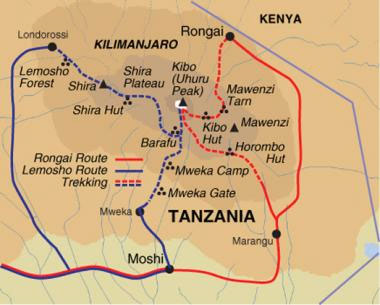
- Number of days walking- 8
- Pace – Approximately 7.1km / 4.4 miles walking per day
Why Rongai and Lemosho ?
We climb Kilimanjaro using the Rongai and Lemosho routes in Tanzania instead of Marangu or Machame because:- Both are quiet, wilderness routes, well away from the crowded climbs. Only 10% of Kilimanjaro climbers ascend by these two routes.
- Both traverse the mountain using different ascent and descent routes, so no back tracking, giving time to explore the different climatic zones, wildlife and scenery.
- We have added extra days to the standard itineraries set by the National Park to help aid acclimatisation and to help you reach Uhuru Peak, at 5895m (19340ft) the highest point in Africa.
Adult Group
This is a small group adult holiday. The group is usually between 4 and 15 in size, with an average of 12 like-minded clients booking individually, in a couple or as friends together.Activity Level
You have a good level of fitness and are looking for a physically challenging holiday. Previous experience is essential for activity based trips.Climb With Confidence
- Exodus use 1 guide for every 2 clients on every climb and as such they are one of the very few operators which follow the national park guidelines on Kilimanjaro.
- All guides have comprehensive first aid training, and as of 1st January 2011 they will carry portable oxygen to treat altitude sickness on all trips, should this be needed. Exodus sponsor a Kilimanjaro Porter Project and invest in their porters education, sponsor guides to do extra training and pay a fair wage on the mountain.
Accommodation Information
You will spend 2 nights in comfortable hotels with en suite facilities. During the climb you will have 7 nights of full-service camping, with a private toilet tent. Limited single accommodation is available and includes a single tent as well as the hotel nights. We can arrange extra accommodation before or after the trip. [/jbox] [/jcolumns] [jcolumns model= “7,4”] [jaccordion size=”small”] Essential Information ::Vaccinations and Visa
Most nationalities require a tourist visa for Tanzania, including British nationals, most EC nationals, Australians, New Zealanders, Americans and Canadians. The visa is available at the border and the cost for British and most other European Nationals is USD50 cash, whilst for US citizens it is USD100 cash. Please note that although Tanzania does not officially require proof of Yellow Fever vaccination, at most airports and other points of entry you may be required to show a certificate of vaccination or an exemption certificate. This includes coming from Europe via, or transiting through an endemic country including the airports of Nairobi (Kenya) and Addis Ababa (Ethiopia). If visiting Zanzibar from mainland Tanzania border officials have been known to demand proof of Yellow Fever vaccination or an exemption certificate. Recommended vaccinations are: Polio, Tetanus, Typhoid, Hepatitis A. Malaria prophylaxis is essential and we suggest that you seek advice from your GP or travel health clinic about which malaria tablets to take. Dengue fever is a known risk in places visited. It is a tropical viral disease spread by daytime biting mosquitoes. There is currently no vaccine or prophylaxis available for Dengue, and therefore the best form of prevention is to avoid being bitten. We recommend you take the usual precautions to avoid mosquito bites. [jacc/] Eating & Drinking ::Eating & Drinking
In the itinerary we state which meals are included on which day. On trek the emphasis is on a varied and well balanced diet with a greater amount of fresh fruit and soup to maximise the daily intake of fluids. Vegetarians are well catered for but please inform us before departure of any special dietary requests. Please note that in Tanzania the availability of certain specialised products for restricted diets, e.g. gluten-free or dairy-free, is minimal or non-existent and we strongly recommend you bring these specialised dietary items from home. You may find it beneficial to bring some ‘summit snacks’ with you from home; summit day is a long trekking day and high energy snacks are not readily available locally in Tanzania. All meals during the climb are included. Please allow about GBP20-30 (USD30-50) for the two lunches (day 1 and 10) not included.Water
Whilst the water we provide on Kilimanjaro is suitable for drinking you may wish to be extra safe and treat it with your own water purification tablets. The EU banned iodine to be used to purify water on 25 Oct 2009. The cheapest alternative is to use chlorine tablets. The major difference is chlorine doesn’t eliminate giardia. Biox Aqua drops or tablets are the best available alternative for sale in the UK as they kill giardia and crytosporidium. [jacc/] Holiday Style ::Holiday style
Grade 6 The summit attempt is graded 7 / tough because of the high altitude and the level of physical effort needed. Please be aware many clients find the summit day on Kilimanjaro the toughest physical challenge of their life. The rest of the trek is graded as 5- challenging more as a consequence of the high altitude and extended wilderness camping than the difficulty of walking; hence the overall grading of this trek as challenging/tough. We strongly recommend that you thoroughly read the Exodus grading system as outlined in the Walking & Trekking Brochure before booking this trip. Maximum altitude 5,895m.Walking Conditions
This is a long and hard trek, which reaches an altitude of 5,895m. Even if you consider yourself fit, you might still find the climb very hard, depending on how well your body acclimatises to high altitude. There is no scientific way to determine how easily you acclimatise, and be aware that the acclimatisation process also can differ from climb to climb. Most of the trails on the Kilimanjaro trek are well defined and of good quality but some forest sections are often slippery and moorland paths can be very wet in poor weather conditions. The final ascent to Uhuru peak is almost exclusively on scree and loose rock without permanent footpaths but no technical skills are required. During the course of the trip we shall spend time at both high and low altitude, experiencing both extremely cold and quite hot conditions. Please note that this is graded as a C/D trek in our Walking & Trekking Brochure; you will need complete confidence in your physical ability to attempt this trek. You should be prepared for an early start every day on Kilimanjaro.Altitude
The rate of ascent to high altitude on Kilimanjaro is rapid because of the shape and isolated nature of the mountain. Despite careful pacing and adequate hydration, it is probable that many trekkers will experience mild altitude sickness. Most recover quickly; but those affected by serious altitude problems will need to descend to a lower altitude with a member of the local staff and probably abandon the trek in the interests of safety. Please report any symptoms of altitude illness to our Guides immediately and be prepared to follow their advice. The decision of the Senior Local Guide in such situations will be final. Over 30,000 people attempt the climb of Kilimanjaro annually and there are, on average, two or three fatalities from Acute Mountain Sickness (AMS) every year. These fatalities are always the result of the failure to undertake a rapid descent quickly enough. Our Guides have had formal training to recognise and deal quickly with the symptoms of AMS, whilst our medical box contains drugs to facilitate a rapid descent together with an evacuation plan from each campsite on Kilimanjaro. Please note that thorough training and preparation still offer no guarantees in the remote and abnormal conditions that exist at higher altitudes on Kilimanjaro. Although rare, a number of medical conditions can also reduce your body’s ability to acclimatise, and thus will affect your performance at altitude and make you more susceptible to AMS. If you are worried about any pre-existing condition (e.g. heart problems), or unsure of your physical ability, we recommend that you seek medical advice prior to booking. Female travellers please note there is some evidence to suggest that the regularity of the menstrual cycle is disrupted at altitude, this disruption has been known to bring on unexpected periods. [/jaccordion] [jcol/]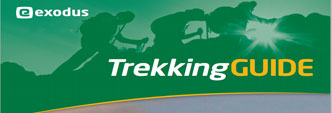 [/jcolumns]
[/jcolumns]
[jbox title=”Contact Us to Book” icon=”//mulberrytravel-1d41c.kxcdn.com/wp-content/uploads//2014/11/ABTA-Mulberry-Travel-Logo-small.jpg” radius=”1″] [jcolumns]
[contact-form-7 id=”6562″ title=”Contact form 1″] [jcol/] [=jbox] Send an email for more information or a personalised quote. Remember, we don’t pressure sell – We’re here to help not to annoy! Visit Us in Person at our Offices: The Steam Mill, Steam Mill Street, Chester, CH3 5AN
Opening Hours:
Monday – Friday 09:00-17:00 Saturdays 09:00-13:00 [=/jbox]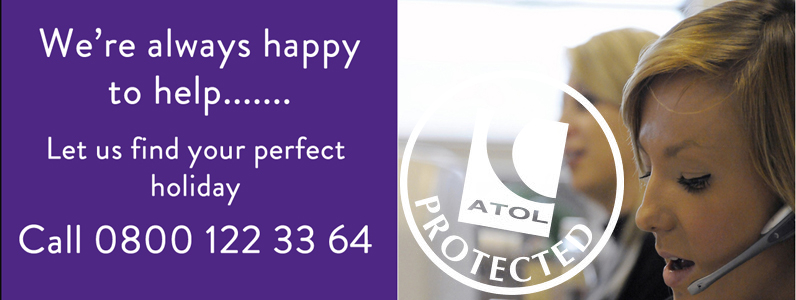 [/jcolumns]
Not seen exactly what you were looking for? – We have access to nearly 500,000 holidays in over 100 countries so let us know if we haven’t managed to show you what you were after…..
[/jbox]
[/jcolumns]
Not seen exactly what you were looking for? – We have access to nearly 500,000 holidays in over 100 countries so let us know if we haven’t managed to show you what you were after…..
[/jbox]

